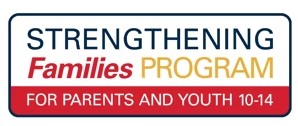Tobacco Abuse and Prevention Education
The best way to protect yourself against vaping-related illness is to stop vaping. Rio Grande County Public Health (RGCPH) & Colorado Department of Public Health & Environment (CDPHE) are aligned on this a position.
With the large number of cases of lung illness we’re seeing nationally, it’s clear there are dangers associated with vaping. While we can’t pinpoint the specific cause of these serious lung illnesses, we do know vaping products are poorly regulated and may contain or generate chemicals that are unsafe, potentially making people sick. Findings from other states show that most people who got sick used THC products, nicotine products, or both THC and nicotine products. That is true in Colorado as well, but because the long-term health effects of vaping are unknown and as information on the illness emerges, our best advice is to consider not using vaping products.
Vaping products contain more than just harmless water vapor. They are marketed as a “safe” alternative to smoking, but the long-term health effects of vaping are still unknown. If you’re vaping to quit smoking, consult your doctor or call the Colorado Quitline (1-800-QUIT-NOW) to get free FDA-approved treatments.
People who vape should be aware that this illness is occurring and be on the lookout for symptoms that include: shortness of breath or trouble breathing, chest pain, cough, fatigue & possible fever. People who think they may have been sickened by any vaping product should contact their doctor, local public health agency or poison control at 1-800-222-1222.
RGCPH & CDPHE are concerned that currently Colorado youth are using tobacco products at alarming rates, threatening the health of our kids, our communities, and the state as a whole. Colorado has the highest nicotine vaping rates in the nation among teens in the United States. Vaping is harmful for youth. Because vaping devices typically delivers nicotine, often in very high levels, vaping harms developing brains, is addictive, and makes youth much more likely to start smoking regular cigarettes. Vaping also is associated with other risky youth behavior.
Healthy Kids Colorado Survey is the state’s comprehensive survey on the health and well-being of young people. In 2017, the survey sampled approximately 56,000 youth from 190 randomly selected middle and high schools statewide. According to Healthy Kids Colorado Survey Data: When asked, “Have you ever used a vapor product? 44.2% in the State & 49.2% of San Luis Valley high school students answered “Yes”. According to the same survey data: When asked have you used a vapor product during the past 30 days, 27.0% in the state & 20.8% of San Luis Valley high school students answered “Yes”.
With this data in mind, we advise that parents should talk to their kids, especially teens, about the risks and dangers of vaping. Free resources are available to help parents talk to their kids at tobaccofreeco.org and from the Colorado School Safety Resource Center (colorado.gov/pacific/cssrc/tobacco-prevention-resources). The Quitline now serves Coloradans as young as 12 years old who want to quit vaping, smoking or chewing. They can enroll themselves quickly and easily at www.coquitline.org or 1-800-QUIT-NOW to get coaching, either through chat or over the phone. Coaching is free, confidential, non-judgmental and is shown to increase the chances of quit success.
It is important to remember that tobacco is a drug, and incredibly dangerous to people of any age. One of the saddest statistics is this: 90% of tobacco users started using tobacco as a child under the age of 18. And it only takes about four cigarettes (on average) to become addicted. It is so important to talk candidly to your children about tobacco and the tobacco industry. Studies have shown that teens with a negative view of the tobacco industry are much less likely to use tobacco than those with a neutral or positive view. While some teens may see tobacco use as a simple experimentation, rebellion or independence-seeking behavior, it often becomes a lifelong addiction. It can result in poor health, disease, decreased quality of life and an early death – not to mention it is a very expensive habit!

BEWARE OF THE TOBACCO INDUSTRY
The tobacco industry spends big money getting product placement in movies. They have stars that kids look up to smoke, trying to convince kids and young adults that it’s cool. The tobacco industry wants your child to start smoking so they have a customer for life – even though their product will have a negative affect on the life of the smoker!
Tips
- Develop open communication with your child where you encourage conversation, ask questions, and actively listen without lecturing or getting upset.
- Show you care so he or she knows they are important to you.
- Reinforce the positive by appreciating their current efforts, accomplishments and good choices.
- Respect is a two-way street so celebrate your teen’s individuality and understand their growing need for independence.
- Have family rules about tobacco with clear, realistic expectations and appropriate consequences.
- Set a good example because you are the most important role model in your child’s life.
Signs
IT’S IMPORTANT TO PAY ATTENTION.
Middle School and High School children are going through lots of changes. One day, they want to cuddle with you, and the next they’re acting like you’re from another planet. It is important to watch for signs that your child might be experimenting with tobacco.
- Clothing and hair smells like cigarette smoke.
- Increased use of breath mints.
- Increase and heavier use of cologne or perfume.
- Bad breath.
Resources
If you are worried a young person may be using, pay attention to your intuition and take action. When you look the other way, or avoid thinking or talking about it, you send the message that it’s ok.. Click here for a list of local and online organizations for more help and resources.





